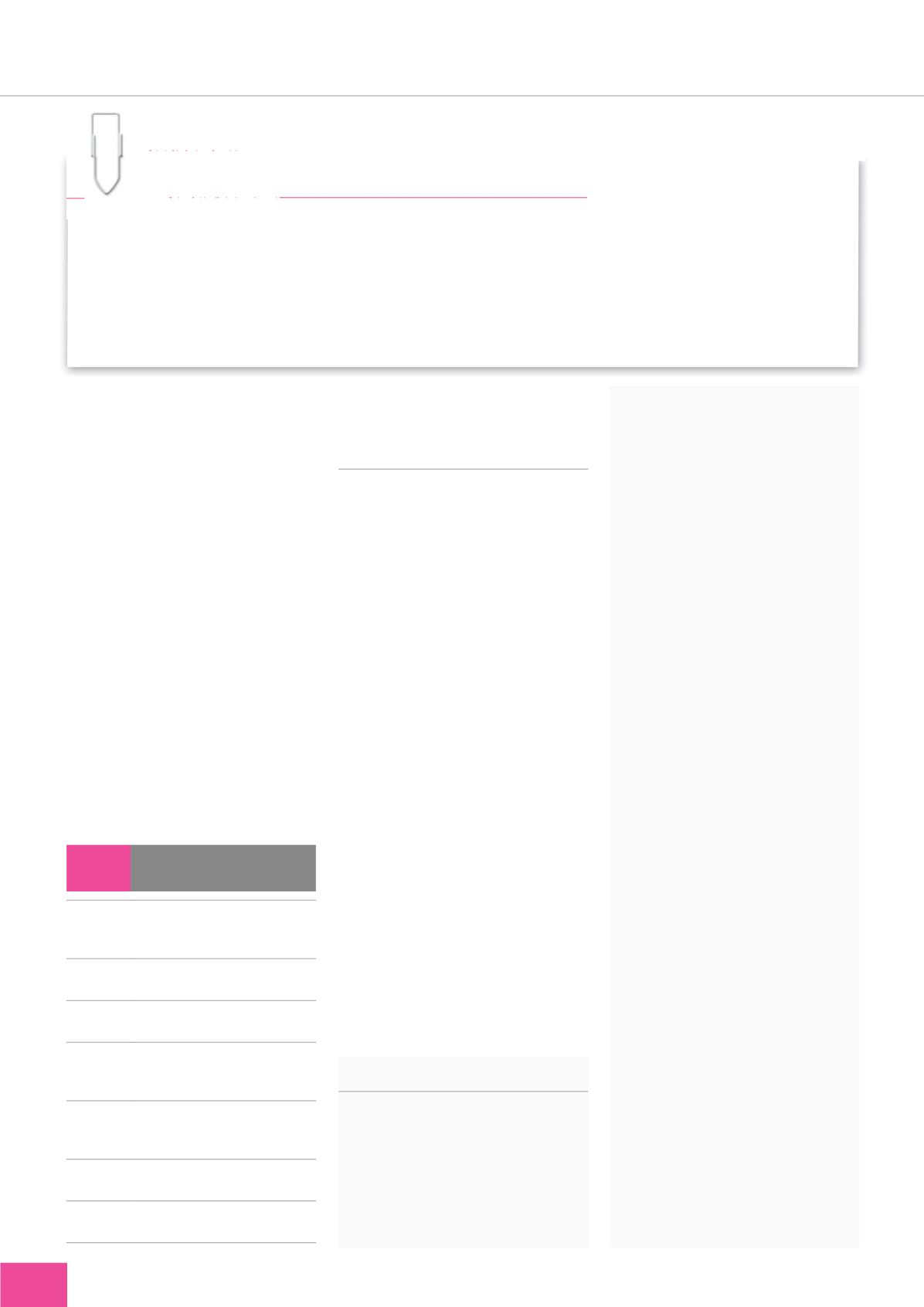
44
WOUND CARE TODAY
2014,Vol 1, No 1
FOCUS ON WOUND EXUDATE
›
frequently, may also trigger an
allergic reaction in some patients
(BPS, 2013).
Barrier products can be used
to protect the periwound skin
— the use of a dimethicone-based
barrier cream (e.g. Cavilon
®
[3M];
LBF
®
[CliniMed]) is helpful, and, if
used correctly, can help to prevent
dressings from adhering to the skin
(WUWHS, 2007).
However, if the patient has
already reported sensitivities to
certain products, clinicians should
avoid using adhesive dressings
altogether, rather than risk a skin
reaction and distress to the patient.
Should symptoms of contact
dermatitis such as erythema and
irritation arise, the use of a steroid
ointment/cream is useful in allaying
the inflammation (BPS, 2013).
CONCLUSION
While a certain amount of exudate is
necessary to aid the process of wound
healing, copious volumes can cause
problems for the patient. The distress
and discomfort of a patient whose
dressings have become saturated
should not be underestimated. If
it is not addressed, the clinician
risks destroying the therapeutic
relationship necessary to ensure
successful wound management.
Treatment must involve a
multidisciplinary team approach, in
which the patient plays a pivotal role.
This involves selecting an appropriate
dressing, deciding on the frequency
of dressing changes, protecting the
surrounding skin, and ensuring that
the patient also takes responsibility
for elements of their treatment, such
as limb elevation.
Regular evaluation of the wound’s
progress is also vital — always taking
into account the patient’s perspective
— to ensure the goal of exudate
management is met by both patient
and clinician working together.
WCT
REFERENCES
Adderley U (2008)
Wounds Essentials
3:
8–13
Adderley U, Smith R (2007)
Cochrane
Database Systematic Review
.
18(20):
CD003948.
Anderson I (2013)
Wounds International
4(2): 9–12
Beldon P (2007)
Wounds Essentials
2:
149–55
Beldon P (2013)
Wounds Essentials
8(1):
68–70
BPS (2013)
Wounds UK
Available at:
content_10816.pdf (accessed 27 February,
2014)
Collins CE, Kershaw J, Brockington S (2005)
Nutrition
21(2): 147–55
Cook L (2011)
Br J Comm Nurs
16(3 suppl):
38–43
Cutting KF (2003)
EWMA Journal
3(1):
17–19
Gardner S (2012)
Wounds Essentials
7
(Suppl):
1
Gregory L, Hampton S (eds).
Exudate
Management: patient-centred care
. MA
Healthcare Ltd, UK
Langøen A, Lawton S (2009)
WorldWide
Wounds
. Available at:
worldwidewounds.com/2009/October/
Lawton-Langoen/vulnerable-skin-2.html
(accessed 27 February, 2014)
Ousey K (2013) In: Bianchi J, Gregory L,
Hampton S, eds.
Exudate Management:
patient-centred care
. MA Healthcare,
London
Rice A (2011)
Wounds Essentials
6:
93–7
Stephen-Haynes J (2011)
Br J Comm Nurs
16(3 Suppl):
S44–49
Vowden K,Vowden P (2003)
Br J Comm
Nurs
8(11 suppl):
4–13
Wolcott RD (2012)
Wounds
24(5):
132–37
White R, Cutting KC (2006)
WorldWide
Wounds
Available at:
.
worldwidewounds.com/2006/september/
White/Modern-Exudate-Mgt.html
(accessed 27 February, 2014)
WUWHS (2007)
Principles of Best Practice;
Wound Exudate and the Role of Dressings. A
Consensus Document
. MEP Ltd, London
Wounds UK (2009)
Skills for Practice:
Management of Chronic Oedema in the
Community.
Wounds UK, Aberdeen
THE SCIENCE — SUPERABSORBENT DRESSINGS
So-called superabsorbent dressings are specifically designed to hold more fluid, as well as‘locking’the fluid into the
structure of the dressing.This helps to reduce dressing frequency, which also means that these dressings can be more
cost-effective through reduction in nurse time, an important consideration in modern health care (Cook, 2011). However,
the weight of saturated dressings may cause discomfort to older patients with wet leg wounds, as well as problems with
mobility (Gardner, 2012). As mentioned above, it is vital to consider the patient’s preferences when choosing a dressing,
and selection should not be solely based on whether the product chosen will reduce the number of dressing changes. In
addition, because managing heavily exuding wounds is a multifaceted undertaking, over-reliance on dressings is unlikely
to be successful — tackling any underlying comorbidities, enlisting the cooperation of the patient, and correct wound
management are at least as important as correct dressing choice (
Table 2
) (Vowden andVowden, 2003).
Table 2:
Management of highly
exuding wounds includes:
›
Comprehensive medical assessment of
patient’s underlying medical problems to
ensure care is optimised
›
Joint decision-making on treatment
between nurse and patient/carer
›
Wound and exudate assessment by a
knowledgeable and competent nurse
›
Absorbent dressing, which is appropriate
with concurrent treatment, such as
compression bandaging
›
Dressing that is compatible with the
patient’s skin assessment and unlikely
to cause irritation
›
Concurrent skin protection treatment with
washing, moisturising and emollient therapy
›
Regular evaluation and reassessment
of treatment


